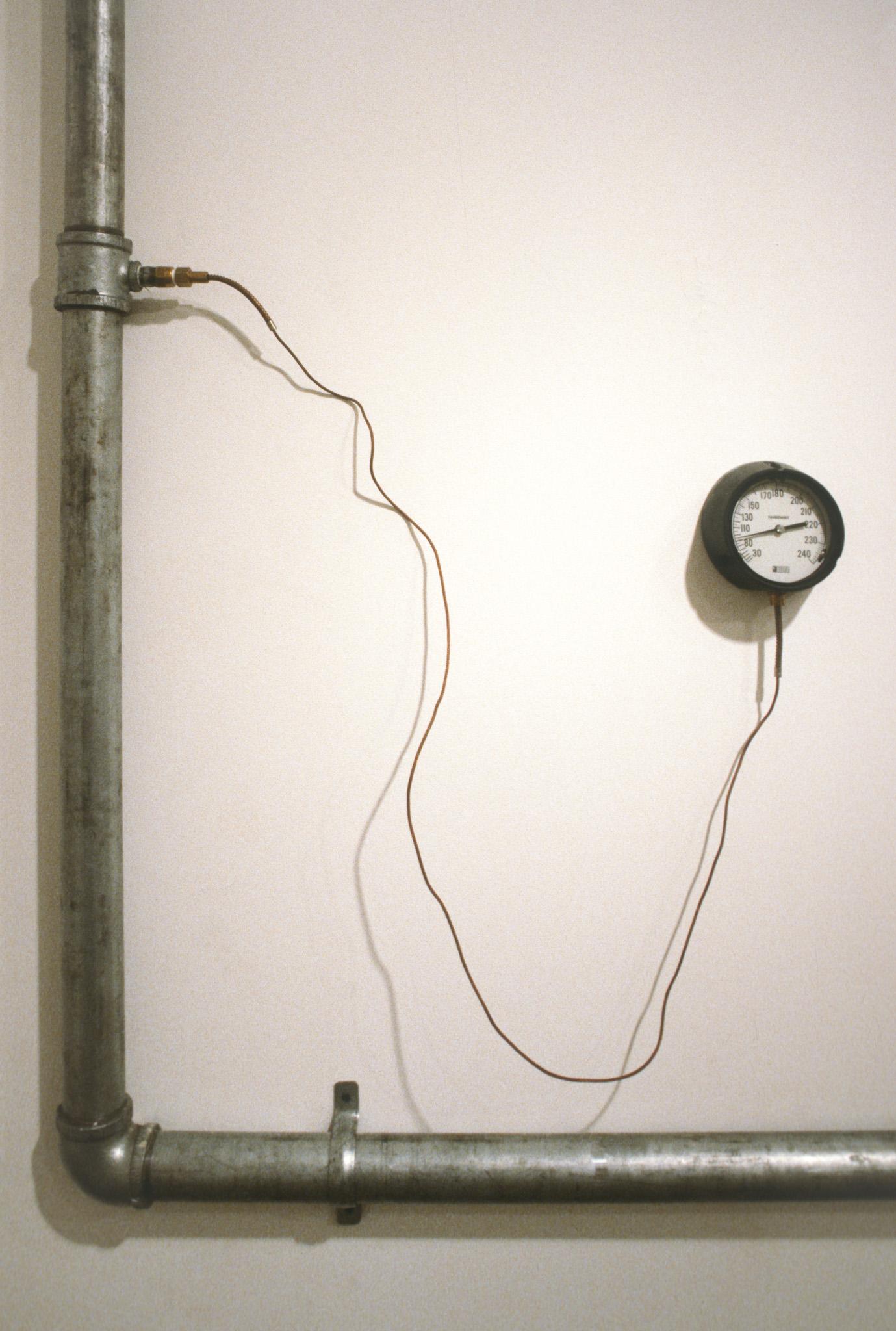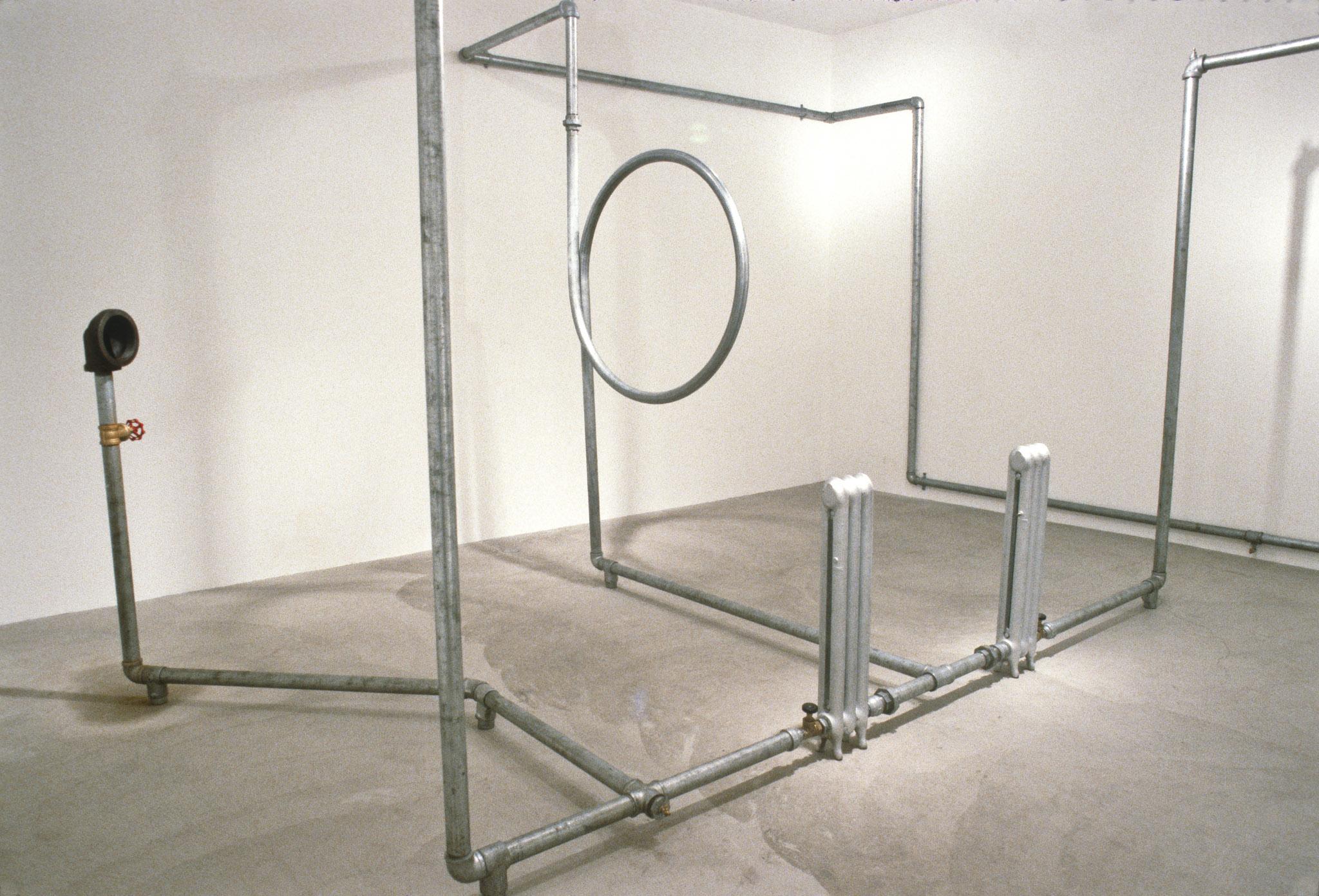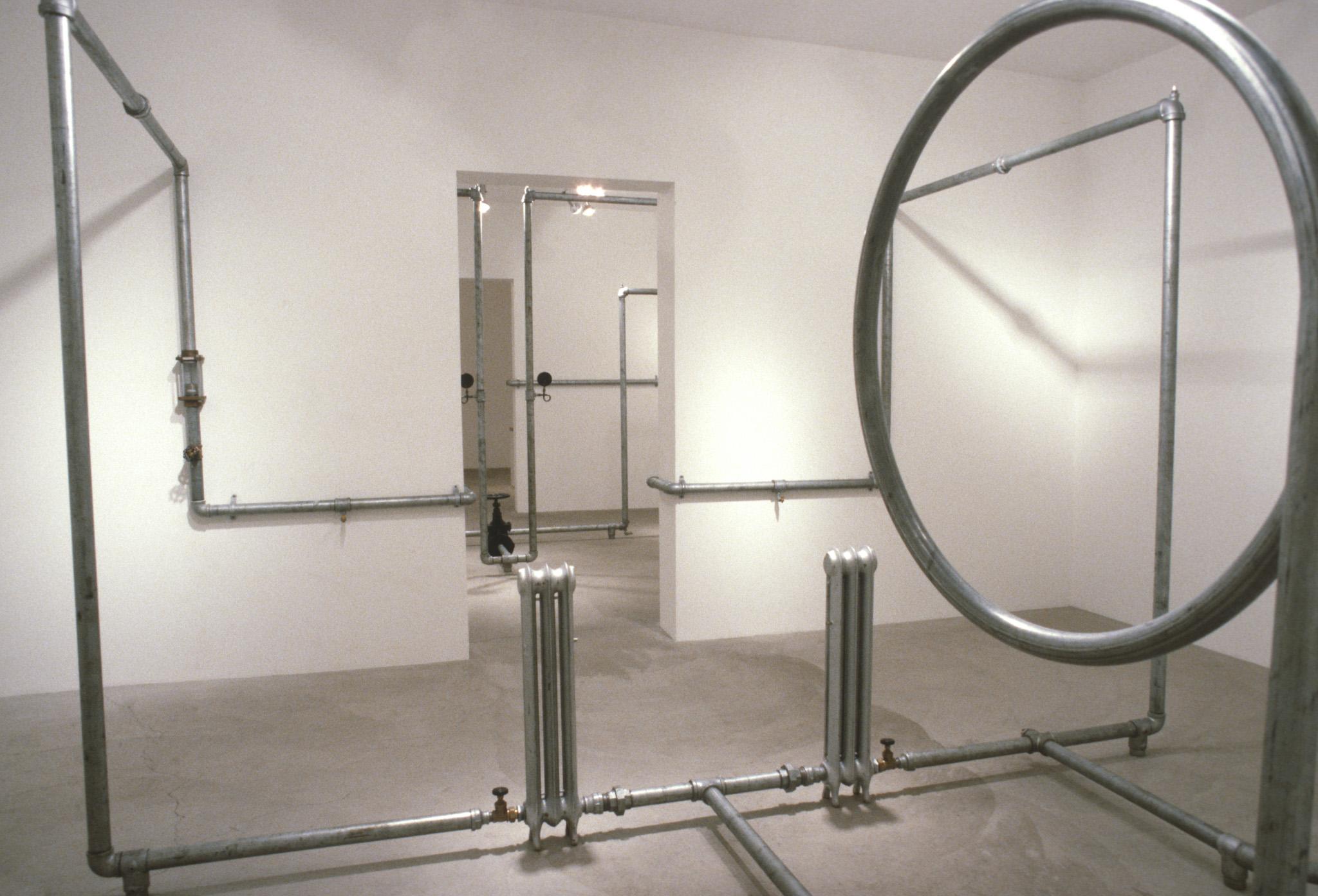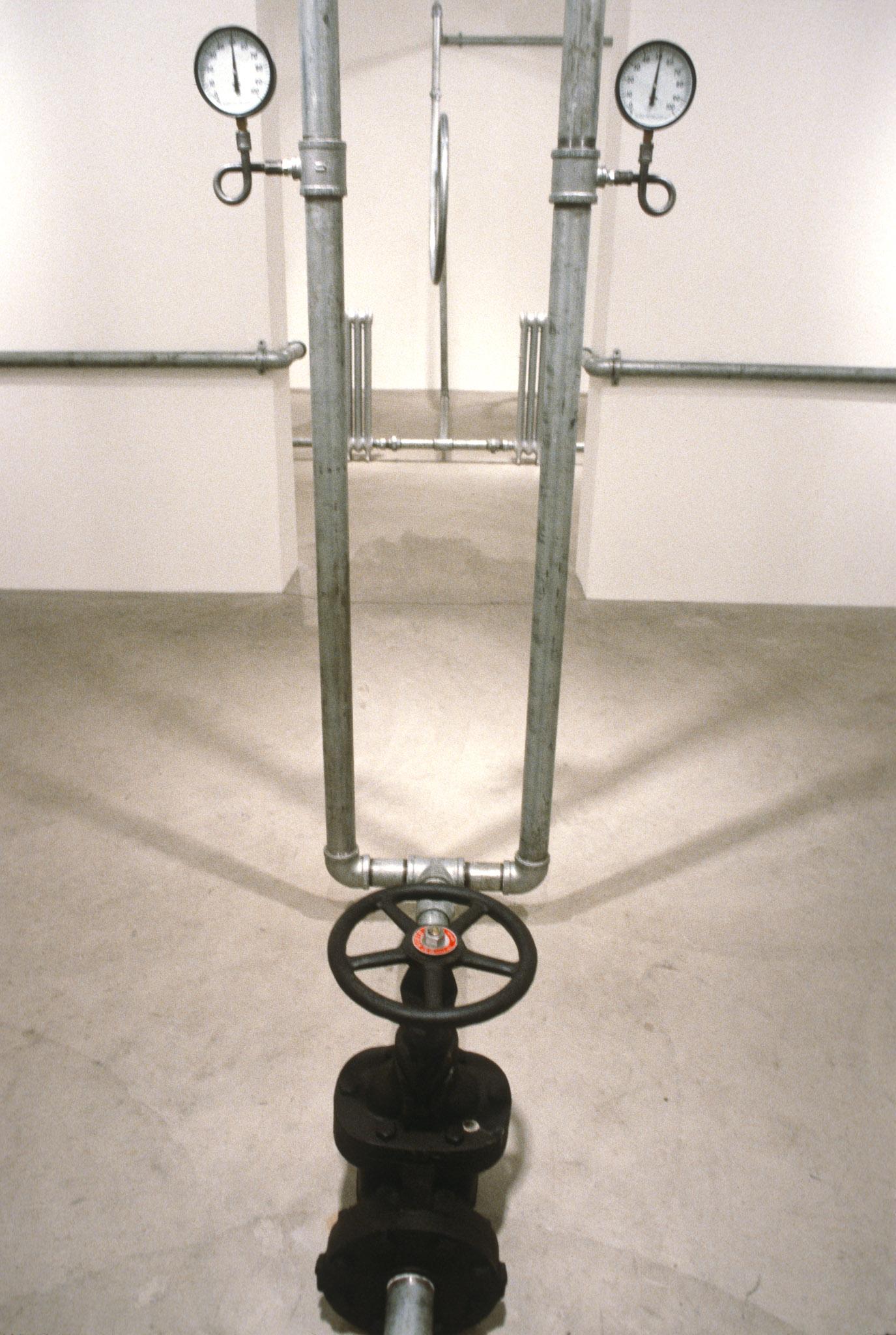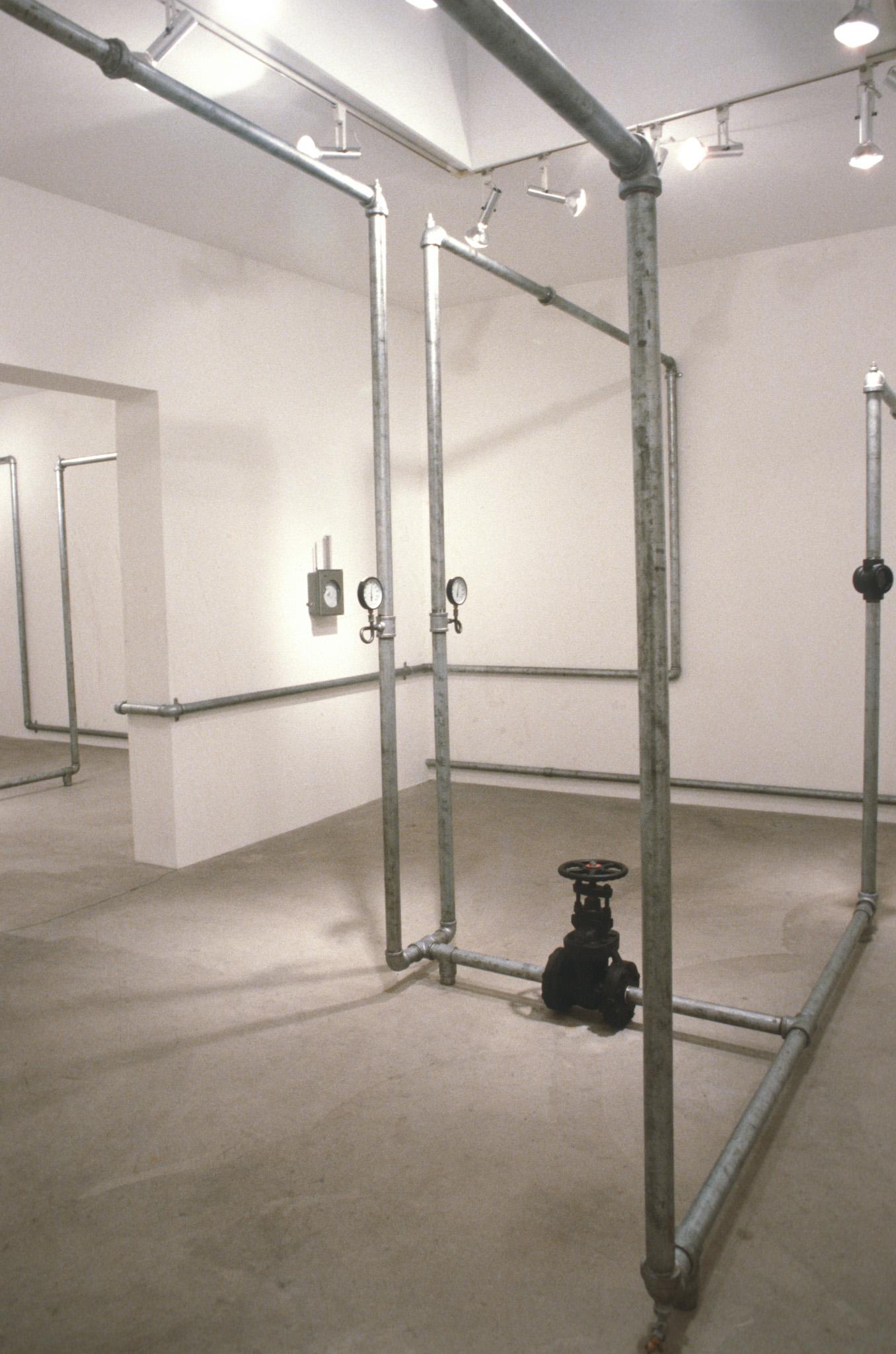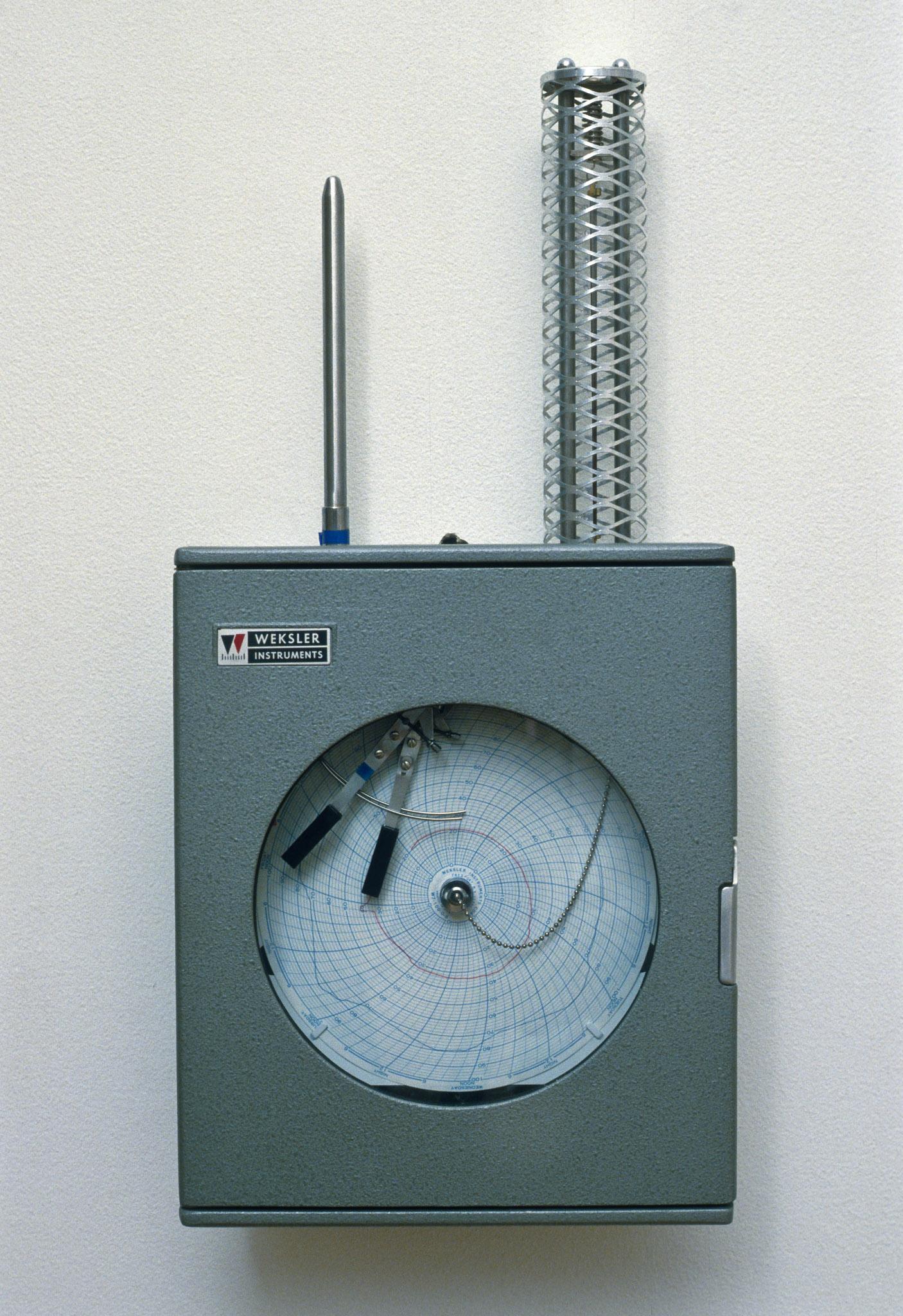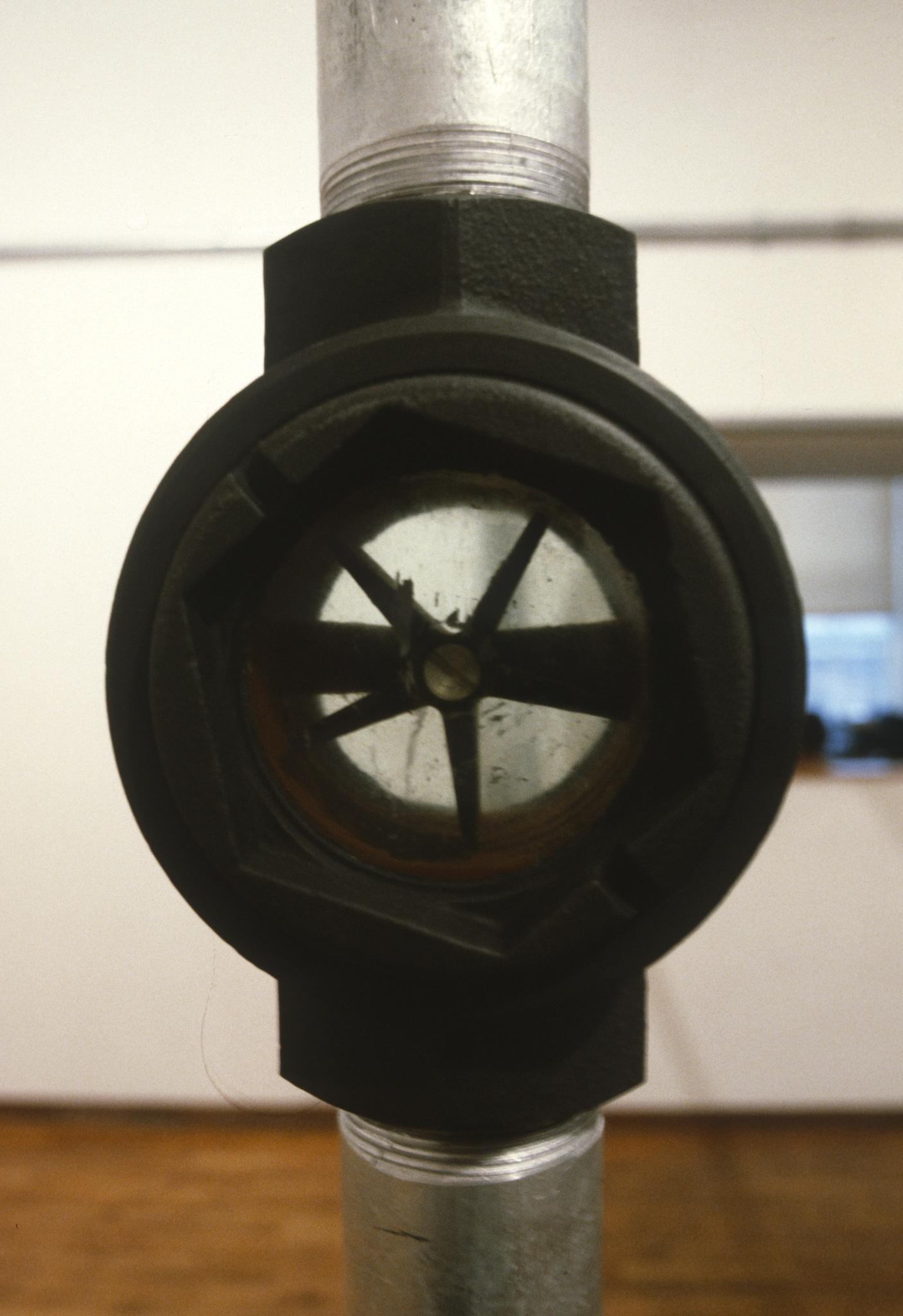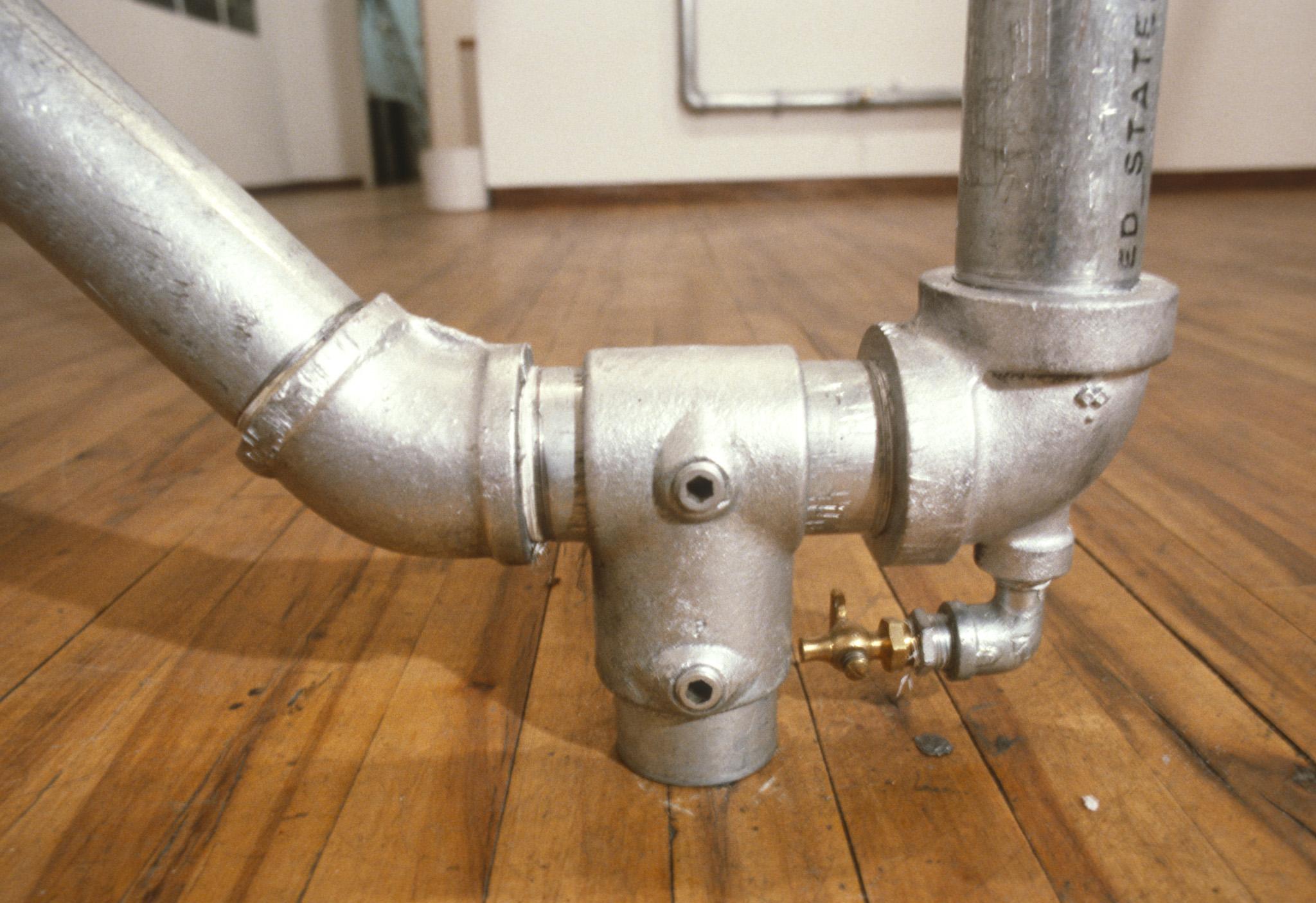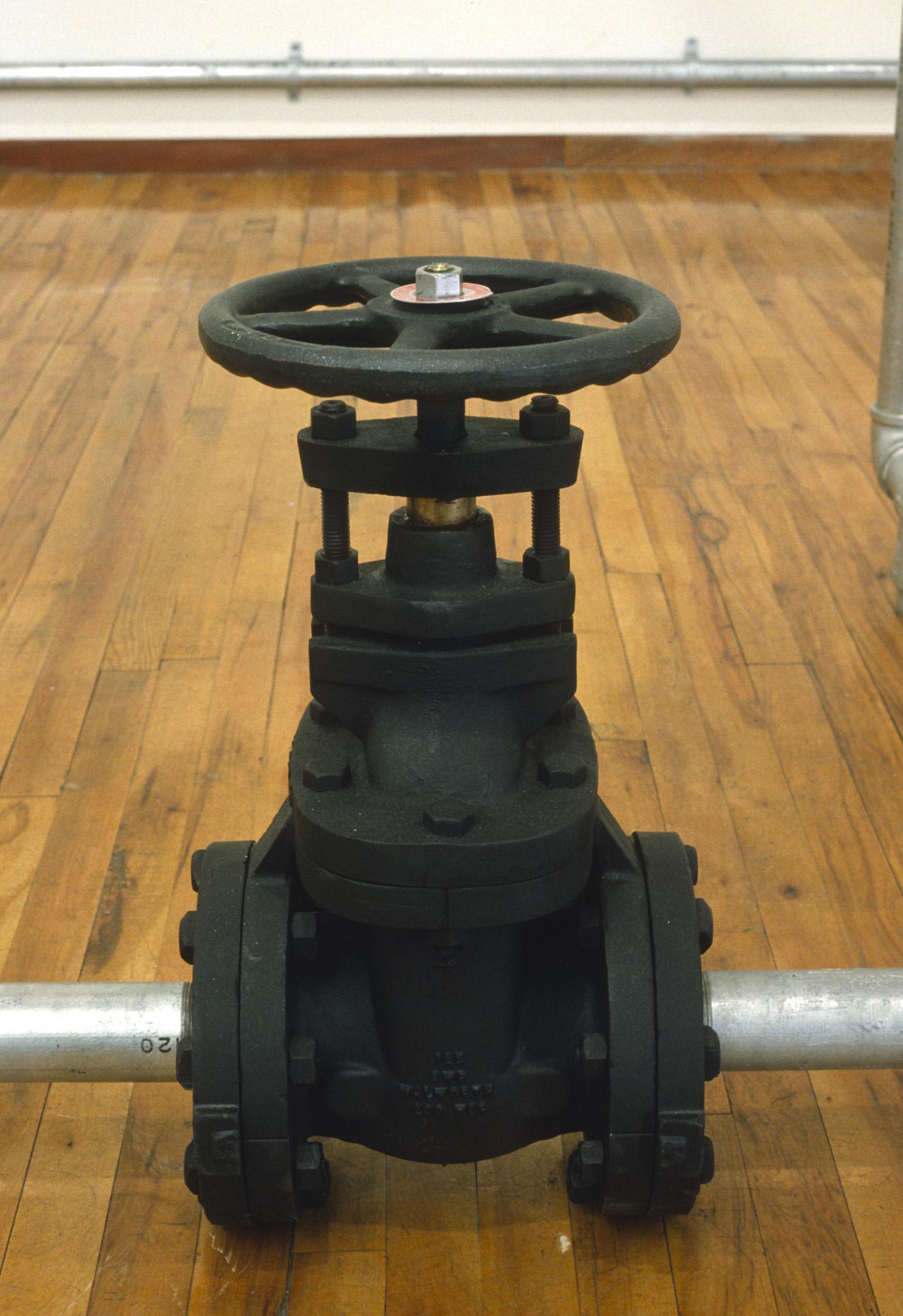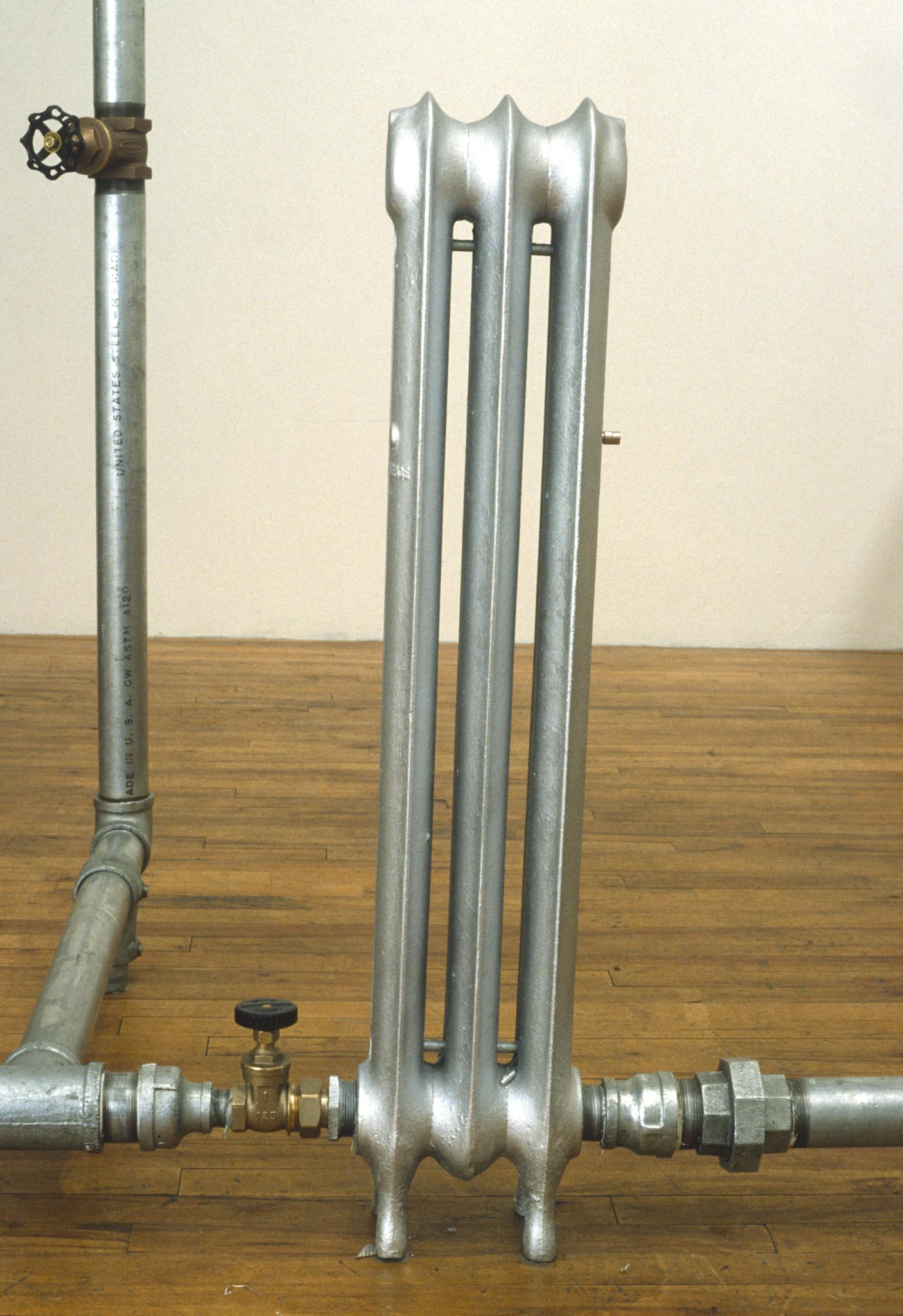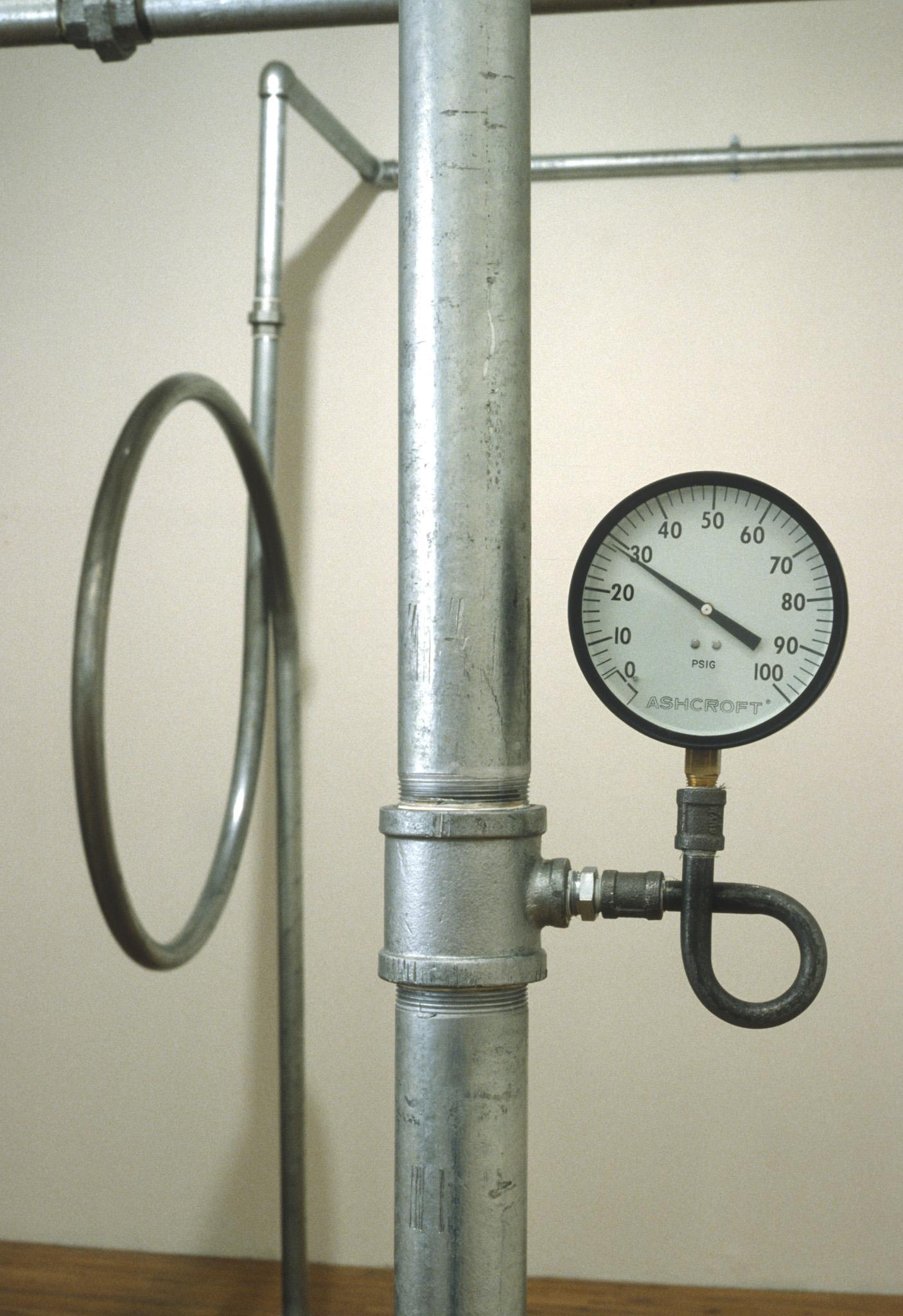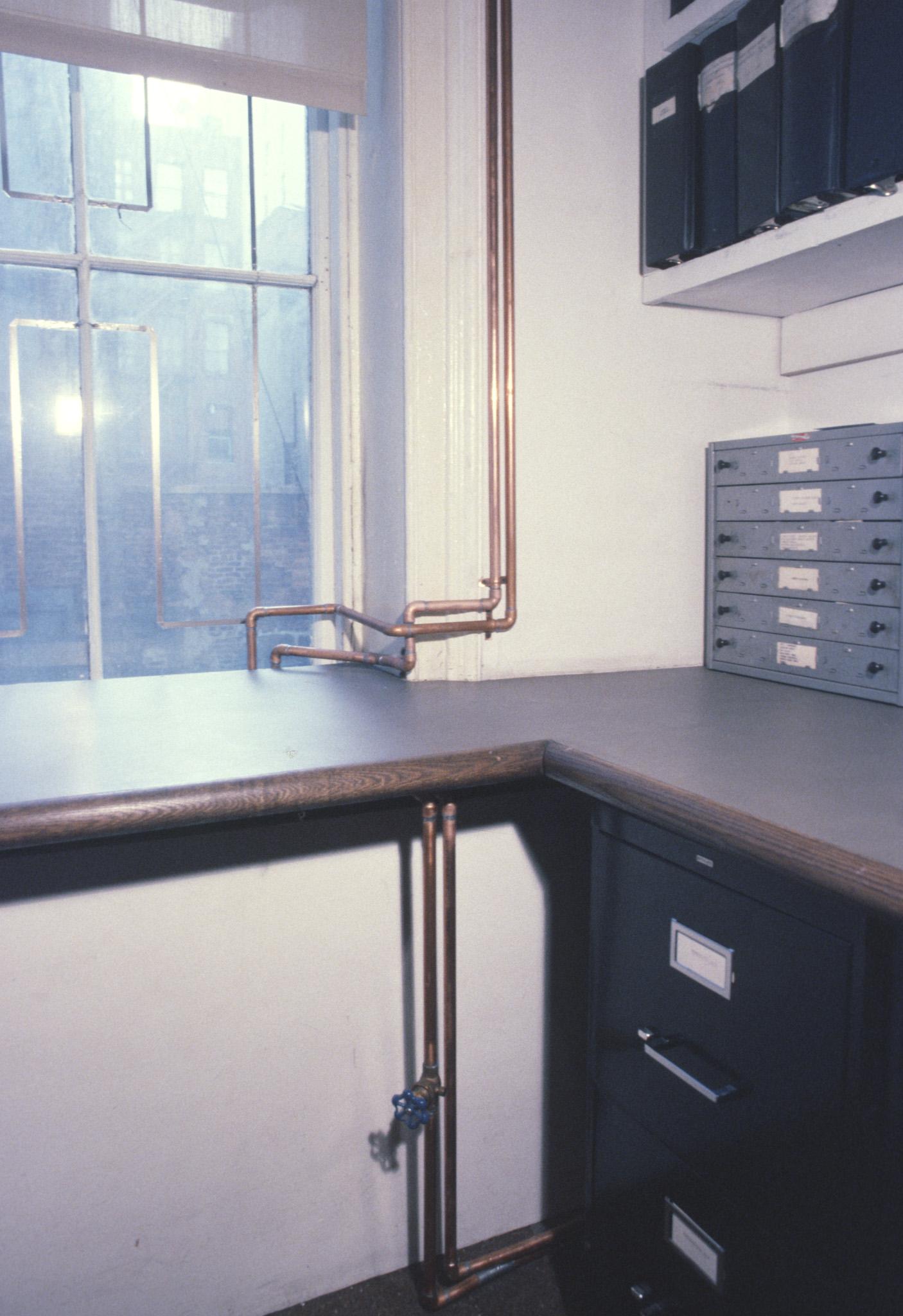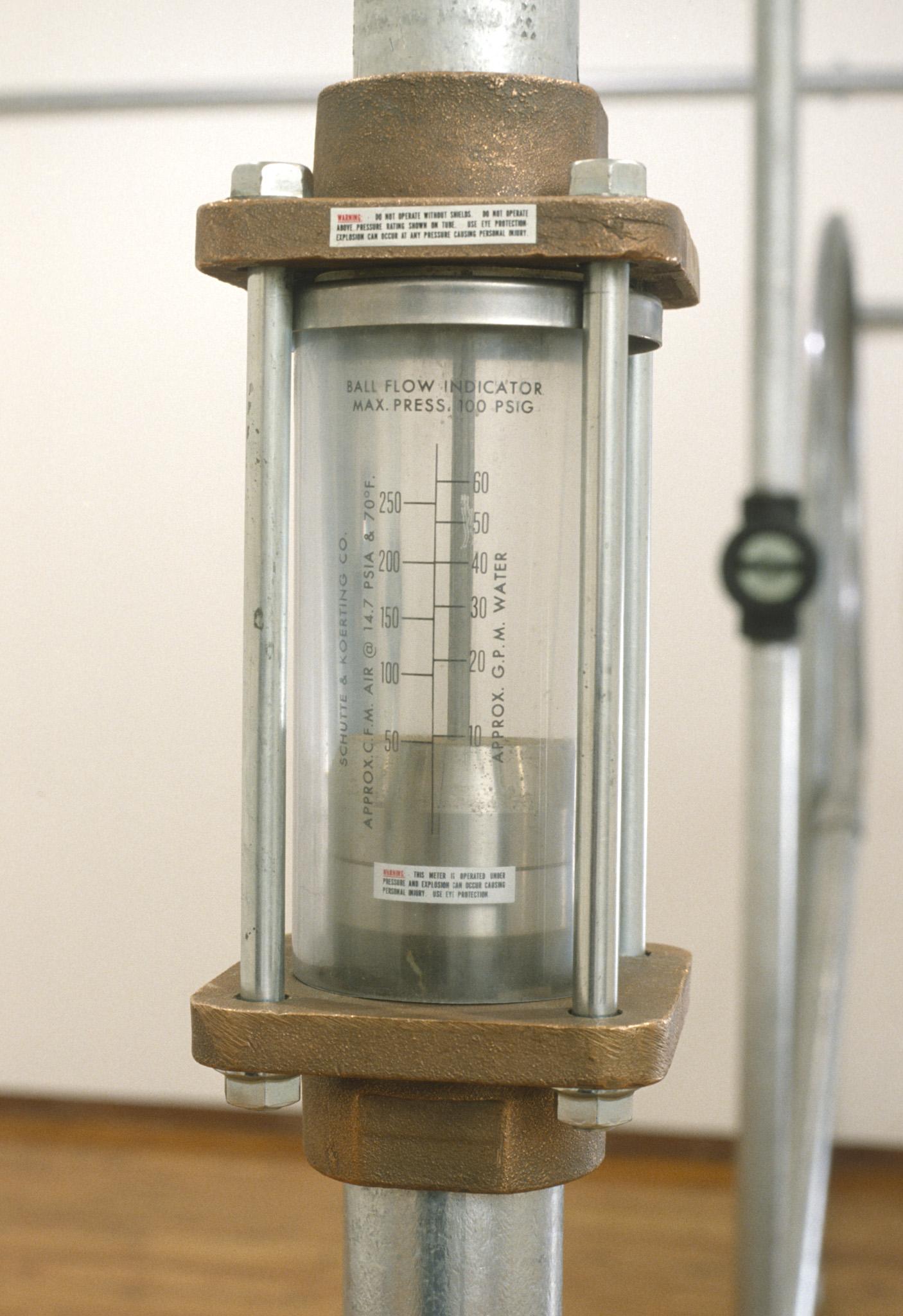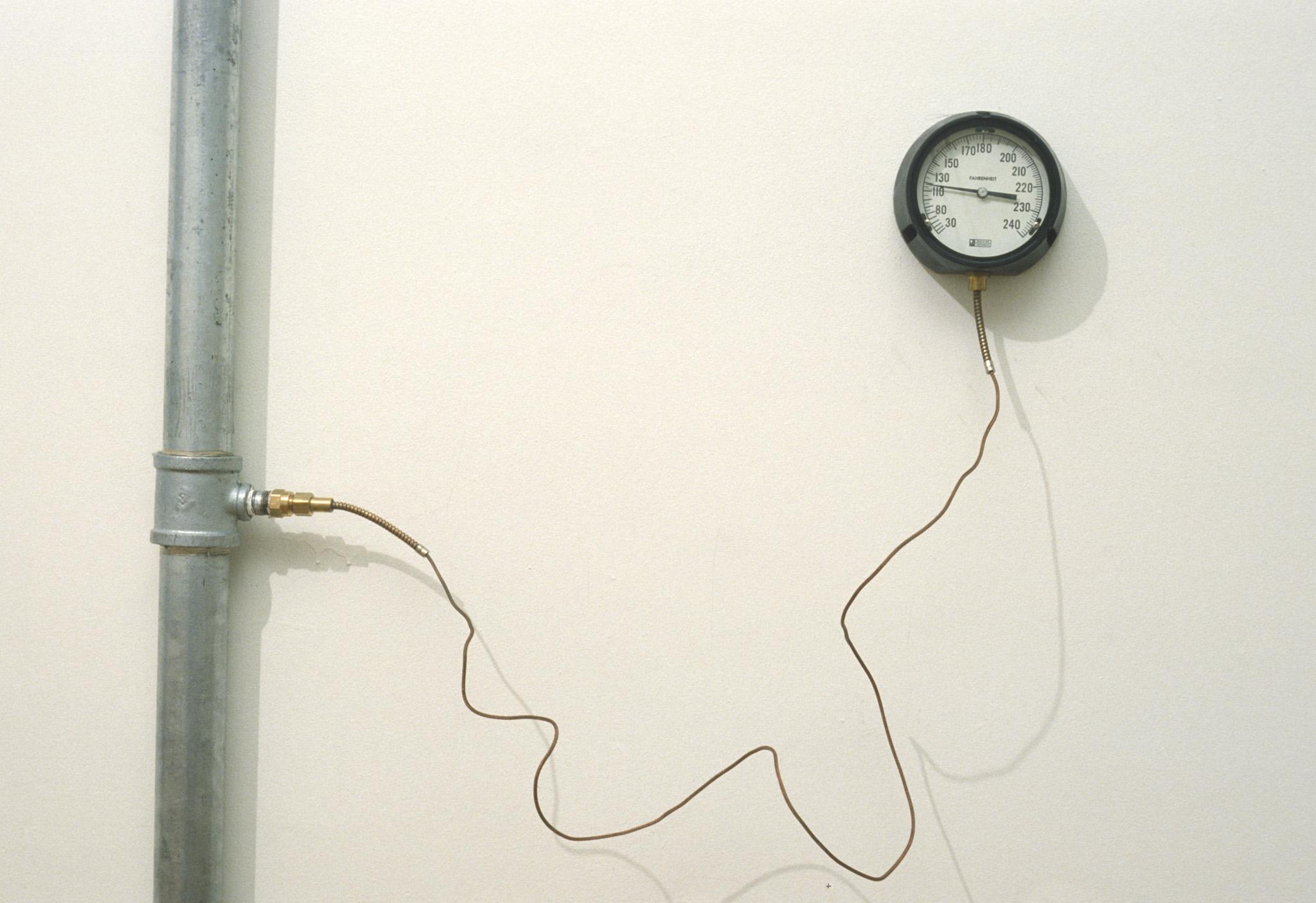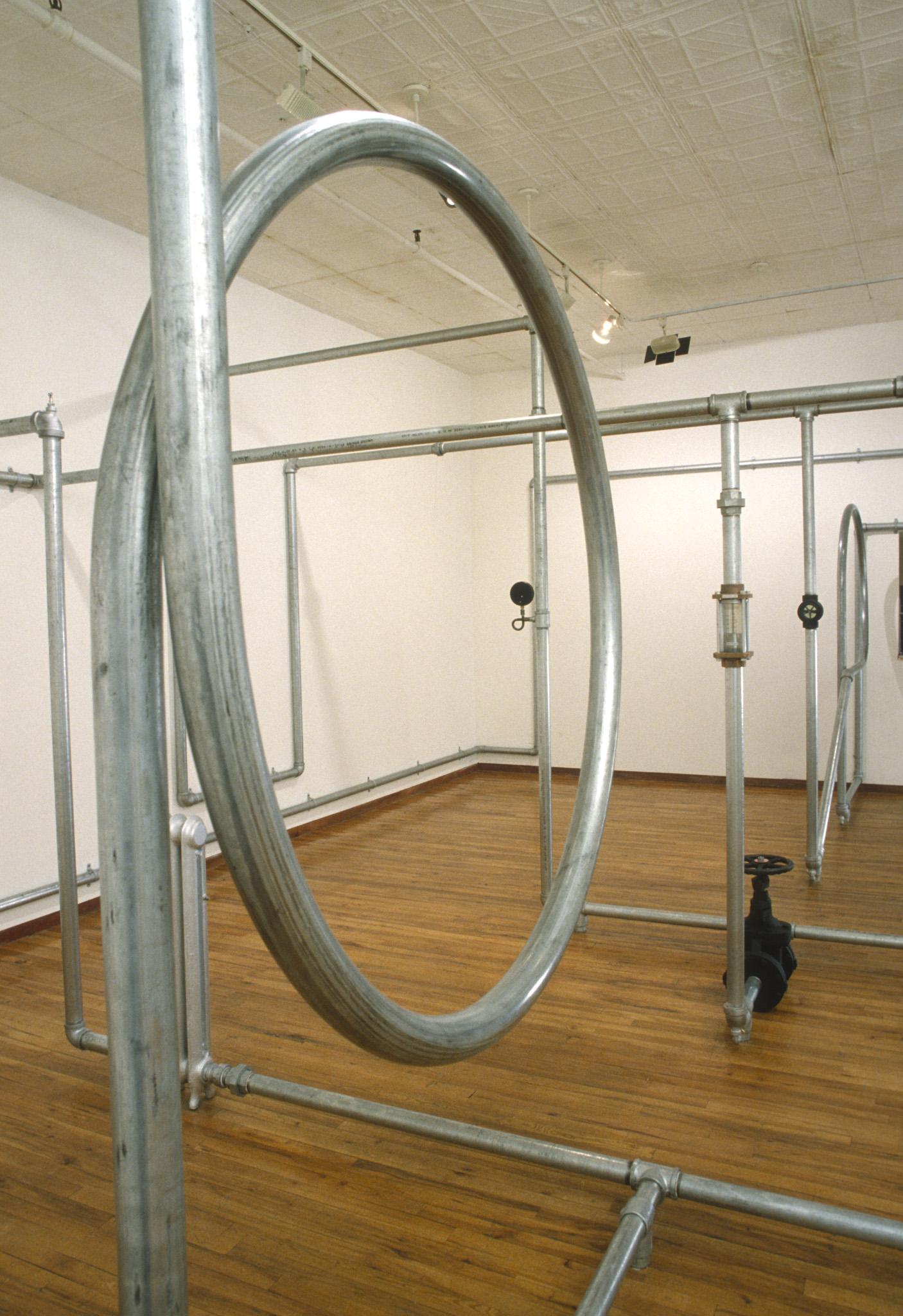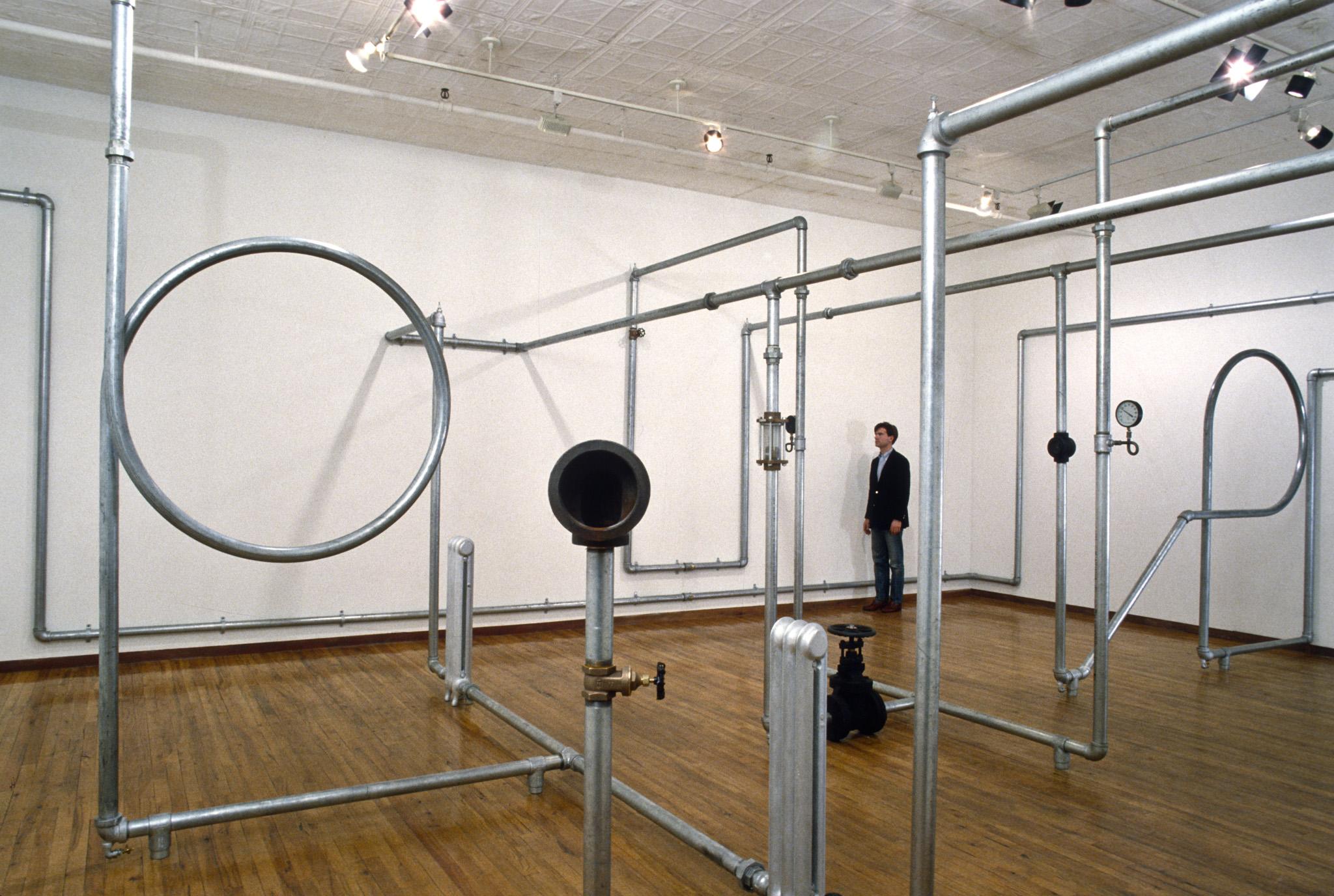Notes on Heating System Works
Both Hot Water Heat (1984), exhibited at the John Weber Gallery in New York, and Flow Ace Heating (1985), shown at the Flow Ace Gallery (now Ace Gallery), Los Angeles, are room-size networks of pipes, gauges, and radiators, which function as the only hot-water heating systems for their spaces. The pipes loop around, and at the Flow Ace Gallery, the network of pipes extends in and out of three gallery rooms. As soon as people enter the gallery, they become enveloped in the structure of the work, the channeled water flowing all around them.
During the entire midwinter period of their installations, Hot Water Heat and Flow Ace Heating kept their galleries at just the right temperatures. The pipes and the two radiators were often hot to the touch, radiating heat throughout their respective galleries whenever the hot water flowed. The heat also caused a wheel to spin visibly in the window of an eye-level gauge.
In constructing these heating system works, pipes were cut, threaded, and joined in the same way regular plumbing work is done, and the pipes were connected to the existing gallery supply pipes for hot water, channeling it through the sculptures.
In each work, visitors could rotate the wheel of the central gate valve in order to turn off the flow of hot water in the pipes, which changed the temperature of the room. Another gauge on the wall recorded temperature and humidity fluctuations in red and blue ink on rotating circular graph paper, and in that way the sculpture created its own drawings.
My heating systems, Hot Water Heat and Flow Ace Heating, like my electrical, plumbing, and outdoor drainage systems, are all channel systems for conducting substance and energy; they are not production systems. The water or electricity comes into the system from outside sources—Consolidated Edison generators, rainfall, a reservoir—and flows through the open circuit of pipes and channels, ending in the functional emission of light, the heating of space, or the drainage of land.
Being physically and visually connected by a single pipe to water coming in from the vast urban infrastructure, Hot Water Heat and Flow Ace Heating call to mind the oil, coal, gas, or plutonium deep within the earth—the basic substances needed to produce the energy keeping water hot and flowing through the sculptures. The works lead us outside the gallery and bring an awareness of our everyday use of Earth’s limited resources. Although Hot Water Heat and Flow Ace Heating are very physical and made of steel, their conceptual and social dimensions are just as significant.
Holt, Nancy. “Notes of Heating System Works.” 1983/2010. Published in Nancy Holt: Sightlines, edited by Alena J. Williams, University of California Press, 2011, pg 114.



